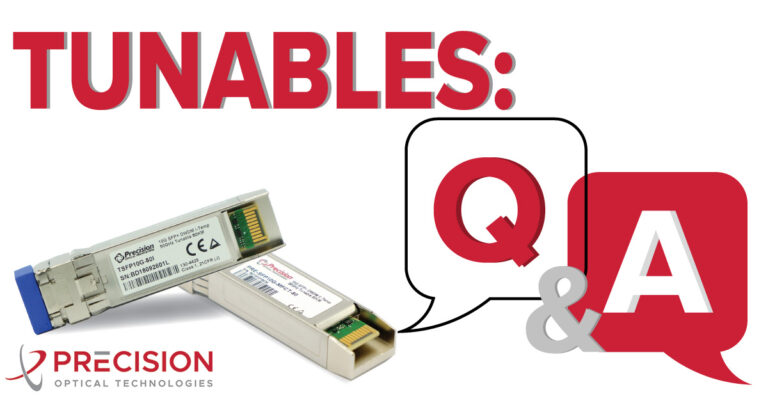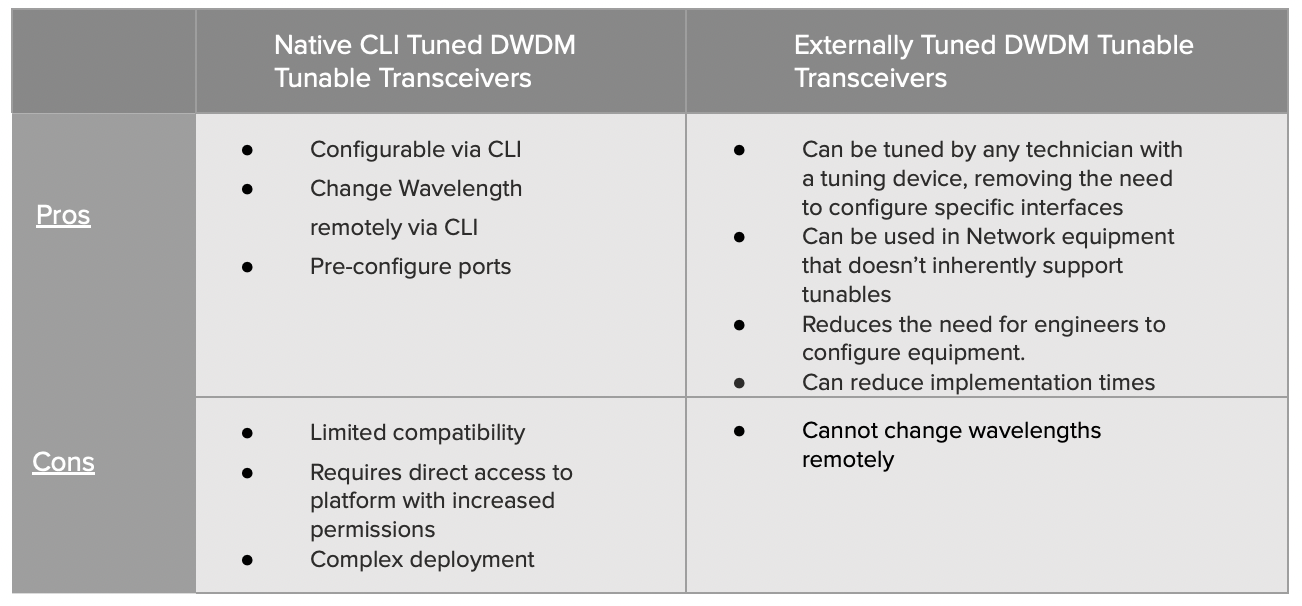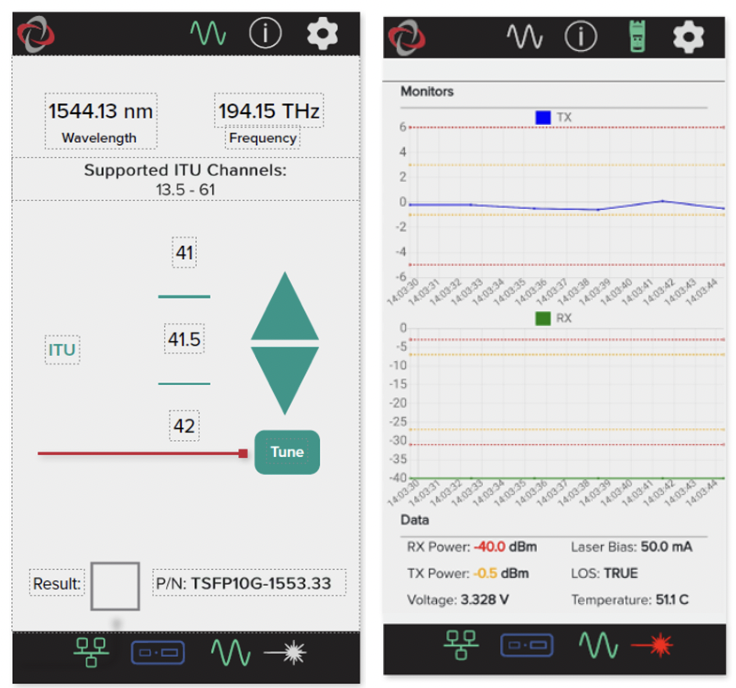
Q&A: When to use CLI Tunables vs External Tunables

In this Q&A, our network experts discuss tuning methods for tunable optics and considerations for how to choose the right tunable optic for your network.
Q: What is meant by CLI tuning and External tuning?
A: Tunable transceivers can be natively tuned via CLI (Command Line Interface within a switch/router) or externally tuned (non-CLI tunable) via a tuning device. Native CLI tunable optics are fully tunable transceivers that can be tuned inside of the host platform using CLI commands. Native CLI tunables are often coded to match an NEM (Network Equipment Manufacturer) original transceiver. Externally tunable optics are fully tunable optics that can be tuned outside of the host using an external tuning device. In general, an externally tuned optic will be coded as a grey-band optic to allow for broader platform compatibility. This enables the use of tunables in systems that don’t inherently support tunables. The optic will be tuned to a specific wavelength/channel while the host perceives it as a non-tunable grey-band optic and therefore cannot be tuned via the CLI.
Q: What applications benefit most from using Externally tuned optics?
A: Platforms that do not support DWDM or Tunable optics. Most network operators are not aware that tunables can be created to appear to the switch/router as a “fixed grey-band optic”. This allows ANY platform to be used to support DWDM and specifically DWDM tunable transceivers. Operators can go directly from equipment that does not support DWDM or tunables directly to the line side and bypass transport equipment muxponders/transponders. This can save costs through equipment reduction and re-using existing equipment to perform DWDM services.
Q: What is the difference between “auto-tune” transceivers and tunable transceivers?
A: The main difference between auto-tune transceivers and the standard CLI / External tunable transceivers is that the auto-tune transceivers have different firmware settings which enable the auto-tune algorithm and feature set. There are several “auto-tune” transceiver options on the market and the device behavior is relatively consistent across vendors in many respects. The main differences between vendors are the length of tuning lock time and the specific algorithm used to perform auto-tuning. Note that there is no MSA standard for auto-tune transceivers, although that is currently under consideration. This has led to multiple manufacturers implementing their own algorithms and in turn, requires end users to select a single vendor “bookended” solution if they want to deploy auto-tune transceivers in the field. Auto-tune transceivers require operational procedures and an understanding of their behavior in order to implement effectively.
Q: What are the pros and cons of CLI vs Externally Tuned DWDM Transceivers?
A: We’ve summarized below some of the differences between native CLI and externally tuned DWDM transceivers. It is up to each user to determine which implementation methodology best suits their needs. In many cases, deployed networking platforms do not support native CLI tunable DWDM optics. This limitation presents an immediate challenge, preventing the use of off-the-shelf tunable optical transceiver solutions. Precision OT offers a unique, flexible and adaptable range of external tuning solutions to support both legacy and evolving DWDM network designs.
Q: Where does Precision OT fit in?
A: Precision OT specializes in understanding your network including architecture, design, OSP, and ISP. We not only provide networking products, but also tools, knowledge and expertise.
One of the tools we’ve developed is the TN100-S-BT, a portable tuning module for SFP+ optics. It is Bluetooth® enabled and includes a mobile tuning application which is compatible with Android or Apple iOS allowing for on-the-go standard ITU C-Band 50GHz or 100GHz channel configuration. An additional advanced feature is DOM (Digital Optical Monitoring), a technology that allows technicians to monitor the health of individual optical transceivers in real time.
Based upon your architecture and implementation, Precision OT can offer advice and solutions to improve your network deployment times. Our vast experience and understanding can assist in reducing cost, complexity, and planning within your network.
For more information on CLI vs External tuning and other networking needs contact our experts!








